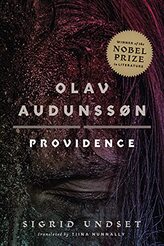 Olav Audunssøn: Providence Author: Sigrid Undset, Translator: Tiina Nunnally, University of Minnesota Press, 2021, 17.95, pb, 269 pp, 978-1-5179-1160-7 Olav Audunssøn: Providence is Tiina Nunnally’s new translation of Book Two of Sigrid Undset’s lauded Audunssøn series. Originally published in Norwegian in 1925 and first translated into English in 1929 as The Master of Hestviken, the series chronicles the life of Olav Audunssøn: husband, father, and heir to land and wealth in 13th-century Norway. In Book One, Vows, Olav’s father, a widower facing imminent death, had secured for seven-year-old Olav both a foster father and a fiancée: Olav’s new foster-sister, Ingunn. As the children matured, their friendship blossomed into romance; but when they consummated their marriage prematurely, Olav’s integrity and the legitimacy of the betrothal were challenged. In Providence, Olav, now master of his ancestral home, commits a desperate act meant to defend Ingunn’s honor and enters a downward spiral into guilt and self-recrimination. Once congenial, he becomes reclusive, alienating friends as he descends, in his own estimation, beyond salvation. A powerful study in the cause and effect of acts both innocent and heinous, Providence plunges the reader into Olav’s darkest nights. In the translator’s note, Nunnally states, “Literary translations depend on the individual translator’s linguistic skills and artistry, but they are also subject to attitudes at the time of their creation…” She hopes hers will “bring the reader closer to Sigrid Undset’s beautiful and lyrical voice.” While Arthur Chater’s 1929 translation features medieval-sounding language in a smooth, if dated, narratorial voice, Nunnally’s delivers precise wording and unadorned syntax. This more contemporary language may initially appear less evocative of the period, but it allows the narrative itself to draw the reader into a casually brutal world in which the tentacles—and the judgment—of the Church pervade every aspect of life. Replete with family feuds, betrayal, clandestine love, and the consequences of a man’s infidelity to his own honor, the Audunssøn saga is recommended reading. Originally published in Historical Novels Review, Issue 99, February 2022 Citation: Kightlinger, Rebecca. "Olav Audunsson: Providence", Historical Novels Review, Issue 99, February 2022. All rights reserved.
0 Comments
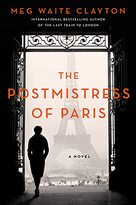 The Postmistress of Paris, Meg Waite Clayton, Harper, 2021, 27.99, pb, 416 pp, 978-0-06-294698-0 “That was something she’d learned early: when to draw attention to herself and when to avoid it. Evanston rules.” Paris, 1938 A decade into her exile from Evanston society, heiress, pilot, and expat Nanѐe lands her Vega Gull and sweeps into the Gallerie des Beaux-Arts wearing her flight jacket and white silk scarf over a black Chanel dress--Aero-Chanel she calls the look—drawing the attention and interest of Jewish photojournalist Edouard Moss: father, recent widow, and refugee from Nazi Germany. Moss’s most intimate photograph, Salvation, attracts and interests Nanѐe. As does the artist himself. Marseilles, 1939 Hitler’s growing list of enemies—writers, artists, and journalists—now includes Moss, who is living with his young daughter, Luki, in Provence. When he realizes they must flee, he engages a friend to accompany Luki on a separate train; they will meet in Paris. But en route, Moss is arrested and incarcerated. Nanѐe now works for the Resistance as Postmistress, covertly delivering coded messages and forged documents to sequestered refugees attempting to flee France. When she learns that Moss has been taken, she draws on the Evanston rules: first attracting the attention of a commandant and securing Moss’s release papers, and then passing unnoticed as she searches for Luki. Her plan? To reunite father and daughter and smuggle them to freedom even as all avenues of escape are closing. Inspired by the life-story of American heiress Mary Jane Gold, this fast-moving narrative slips seamlessly between locations, characters, and subplots. With its breathtaking turns, back-street meets, and an intensifying attraction between Nanѐe and Moss, Meg Waite Clayton’s tale portrays a quiet woman who, fueled by courage and dedication, chooses to risk her life breaking laws rather than save it by returning home to a stifling society life governed by Evanston rules. Recommended. Originally published in Historical Novels Review, Issue 99, February 2022 Citation: Kightlinger, Rebecca. "The Postmistress of Paris, Historical Novels Review, Issue 99: February 2022. All rights reserved. The Dressmakers of Auschwitz: The True Story of the Women Who Sewed to Survive by Lucy Adlington11/5/2021 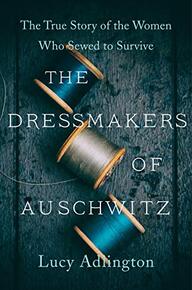 The Dressmakers of Auschwitz, Lucy Adlington, Harper, 2021, 17.99, pb, 304 pp, 9780063136885 “Selection is such an innocent word out of context.” In the 1940s it was not selection that was innocent but those selected: unmarried Jewish girls who were culled from villages such as Bratislava, at the foot of Slovakia’s Little Carpathians, and told only that they were going to work for the Reich. On arrival at Auschwitz, some were selected for the workhouse, others for the crematorium. Seamstresses Irene, Renee, Bracha, and Katka were among those selected to work. And they were worked nearly to death until dressmaker and fellow prisoner Marta Fuchs selected them to sew elegant dresses, furs, and children’s clothing for the SS elite. Starving, sick, and often freezing while pushing needles in, needles out in the camp’s Upper Tailoring Studio, the women sewed for their lives. Though the juxtaposition of a high-fashion tailoring salon in a Nazi slaughterhouse sounds more like nightmarish sci-fi than history, author Lucy Adlington assures the reader that this is neither fiction nor novelization. It is history revealed through detailed accounts of these women’s lives. Adlington opens the story by illuminating the violence, secrecy, and lies that enabled Hitler’s henchmen to get those unsuspecting girls into cattle cars. Lucy Adlington couples imagery of apparel and adornments with small, intimate details to reveal the unraveling of civilized life: a young woman burns with shame when forced to disrobe before others. Another recoils as she pulls on lice-infested clothing before going to work sorting through plunder: the belongings of prisoners selected for extermination. Dress historian Adlington chronicles attire through history, particularly in wartime, but this is more. Her prose, imagery, and clear, unsentimental narratorial voice conjure the very women who brushed ash from their hair as they passed the crematoria on their way to work at Auschwitz’s Upper Tailoring Studio. Highly recommended. Originally published in Historical Novels Review, Issue 98, November 2021 Citation: Kightlinger, Rebecca. "The Dressmakers of Auschwitz, Historical Novels Review, Issue 98: November 2021. All rights reserved. 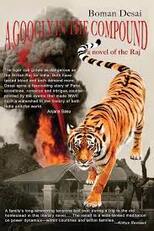 A Googly in the Compound: a novel of the Raj, Boman Desai, 2021, 436 pp, pb, 17.99, 979-8716256620 Navsari, Gujarati, India September 25, 1945 Kavas’s tragedy bonded the family every year, but looking at her sons Dolly still felt a weakness in her bones, like the change of weather on a fracture long healed, teeth gnawing at the crack, tongue flicking at the marrow. The Sanjana family is breakfasting on the twenty-ninth anniversary of Kavas Sanjana’s death. Kavas’s widow, Dolly, and his brother, Phiroze, have returned from Bombay to Navsari with their family, as they do every year, to commemorate the tragedy that took Kavas’s life and enabled Dolly and Phiroze to become husband and wife. Dolly’s firstborn son, Sohrab, fathered by the melancholy, mercurial Kavas, is a lawyer married to Daisy, an Englishwoman and the mother of their two sons. Rustom, son of Dolly and Phiroze, is recovering from a bullet to the brain sustained in the war in Burma, and is planning to study Medicine once the world recovers from WWII. As the brothers argue about politics, Dolly fears once more, as she has all their lives, that the gene at the root of the secret, terrible tragedy that took her first husband and continues to haunt her, might have found its way into her boys. Divided into five parts, this breakfast on the morning of September 25, 1945, introduces the characters in a story that began in 1913 and that involves each person at the table, the servant Alphonse, who is ordered to disperse the monkeys in the trees overhanging the roof, and Victoria, the family’s pet tiger asleep—for the moment—in a back room. As each of the five breakfast scenes progresses, the reader learns more about the family dynamics and becomes intrigued by how they might have come about. And just as the captivated reader is asking herself, for example, “Okay, who is Daisy and how does she fit in?”, author Desai opens a new chapter and takes the reader back to London on Jubilee Day, 1935, where Daisy is about to meet the young Communist whose cryptic correspondence will one day draw her to Navsari and into the Sanjana family. A googly, Desai tells us, is “in cricket, a ball bowled to catch the batsman off guard; expected to spin in one direction, it takes off in another.” Desai’s story bowls googly after googly, each one bringing the reader deeper into the mystery at the heart of Dolly’s gnawing dread. And with each chapter, almost a novel itself, Desai brings the reader more fully into not only the character whose life that chapter reveals, but also into India, two world wars, and the intricacies of both family life and the bone-deep class conflicts underlying race relations in colonial India. The story, richly detailed and absorbing, is a banquet, and its construction—a breakfast scene divided into five acts interspersed with life stories rife with history—is a master class in narratology and temporal ordering. The prose is gorgeous, the story gripping. Highly recommended.  In The Lion’s Den, Barbara Taylor Bradford, St. Martin’s Press, 2020, $28.99,hb, 352 pp, 9781250187420 In the Lion’s Den, Book Two of the House of Falconer series, opens in London, 1889, with James Lionel Falconer about to face his employer, Percy Malvern, with documents newly arrived from Paris: the results of the investigation of thefts in the French wine division of Malvern’s shipping company—the cliff which master storyteller Barbara Taylor Bradford left her readers clinging to at the conclusion of Book One. The news is bad. A disgrace. It could kill the already ailing Malvern. And it’s exactly the opening Bradford’s readers count on. Confident in the hands of this skilled storyteller, they know they can now sit back and devour this tale. Book One, Master of His Fate, introduced the dazzling array of characters who will now mingle, fall in love, build empires, and, it appears, try to kill one other. When Malvern’s daughter, Alexis, abdicated as his successor after a sudden, devastating loss, Malvern came to increasingly rely on Falconer. Now, moving between 1890s London, Kent, and Paris, Falconer solidifies his position with Malvern while taking his first steps as a merchant in bustling Kent, always keeping his eye on the prize: becoming a merchant prince, his own man. But when Alexis emerges from her grief, shedding pounds and stepping out of her self-imposed exile in style, it appears she is ready to take the reins. And, possibly, to steal a heart. Book Two is meaty and skillfully enough crafted to stand alone. But Book One provides the background that brings the myriad characters and locations to life. It serves as the delicious, hearty base for this literary stew. So, while Taylor’s fans may be tempted to eat In the Lion’s Den up with a fork, I’d suggest starting with Master of His Fate and using a spoon. Savor every drop. Recommended. Originally published in Historical Novels Review, Issue 94, November 2020 Citation: Kightlinger, Rebecca. "In the Lion's Den" Historical Novels Review, Issue 94: November 2020. All rights reserved. 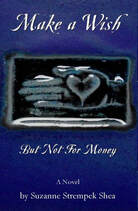 Make a Wish But Not For Money, Suzanne Strempek Shea, 2014, PFP Publishing, 281pp, pb, 17.95, 978-991427567 When Rosie loses her position as a bank-teller and lands an unexpected job as a palm reader in a nearly defunct suburban mall, she discovers her ability to "read" a person's life in the images she sees in their hand. "Make a wish, but not for money," she tells each client (or customer? What should she call them?). And then she tells them what she sees, or somehow knows about them, and as her fame as a seer grows, so does the clientele at the until-then dying Orchard Mall. The author's innate understanding of people merges with her keenly honed skill as a novelist and memoirist to bring to this story believable, intriguing, and really funny characters, a teetering relationship with a soon-to-be fiance, and a storyline that kept me so engaged I hated to put the book down almost as much as I dreaded finishing it and having to leave that little town. You don't just read this book, you live it. And you keep living it and thinking about and wondering about those people from the Orchard Mall long afterwards. A funny, touching, lovely story beautifully told. Review posted on GoodReads 9/25/2020. https://www.goodreads.com/book/show/23019385-make-a-wish-but-not-for-money 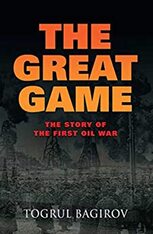 The Great Game: Story of the First Oil War Togrul Bagirov, 2020, Booklocker.com, 322 pp, $19.95, pb, 9780985197315 The Great Game is a fictionalized account of the Nobels—brothers Robert, Alfred, and Ludvig, and Ludvig’s son Emanuel—innovators and relentless competitors who revolutionized oil development and established the Nobel Prize. The story opens in 1876 with Emanuel and Ludvig arriving in Baku, Azerbaijan, a town soaked in oil spewing from derricks. Repulsed by the waste and filth, Ludvig invents modifications to oil extraction, refining, and shipping processes and provides workers with housing, education, and medical care. The editor’s foreword describes the book as “a historical novel—with the emphasis being on ‘historical.’” I agree. History is its strength. This fascinating account features international competition, espionage, sabotage, and the rise of the Bolsheviks and the Russian Revolution. Unfortunately, it opens with an irrelevant subplot teaser regarding Emanuel’s love affair. The writing is riddled with first-draft clichés: “Crossing his arms over his chest, he lifted his chin and stubbornly refused to enjoy himself.” The dialogue is stilted: “Shall I tell you, son, that I was impressed by your work ethic? And because of that difficult job, you learned early on about the satisfaction that can be derived from hard work.” Even Julie Gold, a smart, young, daring spy and double agent with ninja-like street-fighting skills, says things like, “Could I have lived a simple life? Content with a husband, children, and a day-to-day existence which involved neither clandestine adventures nor bloodshed?” In his unabashed homage to the Nobels, the late scholar Togrul Bagirov provided intriguing setting, action, and historical references. So, yes, the historian put the emphasis of his historical novel on historical. Had the editor put an equal emphasis on novel, this story could have been a riveting read. Originally published in Historical Novels Review, Issue 93, August 2020 Citation: Kightlinger, Rebecca. "The Great Game: The Story of the First Oil War" Historical Novels Review, Issue 93: August 2020. All rights reserved. 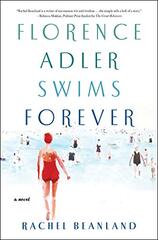 Florence Adler Swims Forever Rachel Beanland, 2020, Simon & Schuster, 320 pp, $25.99, pb, 9781982132460 Atlantic City, 1934. On a fine June day, Florence Adler, training to swim the English Channel, dives into the ocean and disappears beneath the waves. Left on the beach are her parents, Esther and Joseph; her adoring young niece, Gussie; and a young German woman named Anna, who is staying with the Adlers while Joseph helps her negotiate the Byzantine immigration process. As Esther and Joseph bury Florence, they spin an elaborate deception intended to shield their other daughter, Fannie, pregnant and at hospital bedrest, from the tragic news. The secrets and lies insulate Fannie but eventually cocoon the entire Adler family. The story’s setting further smothers them: Esther, Joseph, Gussie, and Anna are ensconced in a tiny apartment, Gussie sleeping in its hot, sometimes suffocating, sunporch, while Fannie is tucked away in a hospital room and her ne’er-do-well husband, Isaac, lives alone, his own lies and shifty business dealings further isolating him from the family. It is Stuart, Florence’s friend and swim coach, who brings in light and fresh air. Though he keeps the Adlers’ secret, he lives outside their cocoon. His easygoing nature and his work as a lifeguard shift both mood and setting from gloom to daylight. As co-founder of a club that includes only him, Anna, and Gussie, he helps Gussie keep track of the family’s “story” and forms ties with Anna that promise to bring her and the Adlers through their terrible ordeals. Ensemble stories like this, with eight fully developed, intertwining main characters, can become unwieldy; but Beanland’s narrative, cleverly divided by timeline and character, flows beautifully, allows for enriching backstory, and draws the reader into an intimate family drama based on the life and tragic death of the author’s great-great-aunt, Florence Lowenthal. A lovely story, skillfully created. A triumph. Highly recommended. Originally published in Historical Novels Review Issue 93, August, 2020. Citation: Kightlinger, Rebecca. "Florence Adler Swims Forever" Historical Novels Review Issue 93, August, 2020. All rights reserved. 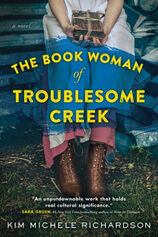 The Book Woman of Troublesome Creek Kim Michele Richardson, 2019, Sourcebooks, 320 pp, 15.99. 9781492671527 “Right there’ll do it." Pa fussed one last time with the slide on the courting candle, then finally placed the timekeeper on the table in front of my rocker and the empty seat beside me. Troublesome Creek, Kentucky. 1936. “There didn’t seem to be much marriage prospect for the last female of blue mountainfolk,” says narrator Cussy Mary. But Mary’s father, a coal miner whose days are running short, intends to see his nineteen-year-old daughter settled. She resists, for if she marries she will lose her job as a Pack Horse Librarian, carrying books to the hillfolk of “Kaintuck,” and her work is all the security she needs and the only life she wants. Her patrons, poor and uneducated, and many starving to death, relish the books she brings. And despite the hereditary blue skin that renders their “Book Woman” an untouchable in town, they love and respect her. By depicting the struggles of a woman whose skin tones range from sky blue to cobalt, author Kim Michele Richardson lays bare the lengths to which Mary is willing to go in order to be accepted, and the prejudice and meanness that underlie her shunning by neighbors and co-workers. Richardson skillfully allows her narrator, without self-pity or boasting, to reveal both the pain of her loneliness and the will and compassion that enable her to survive in Troublesome Creek and even flourish as she makes her solitary rounds through Kentucky’s treacherous hills. Richardson, a master of phrase, cadence, and imagery, once again delivers a powerful yet heartfelt story that gives readers a privileged glimpse into an impoverished yet rigidly hierarchical society, this time by shining a light on the courageous, dedicated women who brought books and hope to those struggling to survive on its lowest rung. Strongly recommended. Originally published in Historical Novels Review Issue 88, May 2019. Citation: Kightlinger, Rebecca. "The Book Woman of Troublesome Creek" Historical Novels Review, Issue 88, May 2019 All rights reserved  The Devil Aspect Craig Russell, Doubleday, 2018, $26.95, pb, 432 pp, 9780385544368 Prague, 1935. Hrad Orlů Asylum, an ancient hilltop fortress reputedly built to plug the mouth of Hell, once imprisoned the demonic Jan of the Black Heart but now serves as a maximum-security psychiatric hospital confining the Devil’s Six, Czechoslovakia’s most notorious murderers. Because the inmates believe that the Devil either coerced them to kill or eviscerated their victims himself, psychiatrist Viktor Kosárek sets out to determine whether their psychopathy confirms his “Devil’s Aspect” theory: that evil resides in the psyche and can therefore be excised, or at least contained. After administering drugs that “strip away the ego,” Kosárek interviews The Vegetarian, The Woodcutter, The Sciomancer, The Glass Collector, The Clown, and The Demon, who recount both their crimes and the factors that induced them to kill. But only when those drugs bring his patients to the brink of death does Kosárek begin to find answers. Meanwhile, just outside the fortress walls, women are still being murdered in Jack-the-Ripper style, and police investigator Lukáš Smolák has arrested a suspect who claims the Devil committed the murders. The book’s setting and premise make for engrossing reading until the author’s hand begins to show. Egosyntonic and egodystonic behavior, coupled with theories of transdimensional resonances (ghosts), collide with myriad Slavic demon myths including Černobog, the Black God; Veles, the Dark Lord of the Underworld; and Kostej the Deathless. Countless iterations of shadow, darkness, and forest metaphors fill the remaining spaces in this dense narrative, which also provides a lukewarm romantic subplot and brooding backstories of suicide, animal slaughter, and child rape. Throw in dreams foreshadowing Nazi occupation, and by Chapter 65, story is eclipsed by device. Twenty-two chapters later, what began as a promising thriller ends in a wild yet somehow laborious ride, its two-chapter epilogue dead weight despite an elegant twist. Rebecca Kightlinger Originally published in Historical Novels Review Issue 87, February, 2019. Citation: Kightlinger, Rebecca. "The Devil Aspect" Historical Novels Review 87 (February 2019). https://historicalnovelsociety.org/reviews/the-devil-aspect/ All rights reserved. 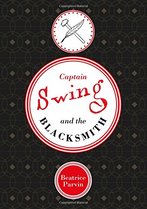 Captain Swing and the Blacksmith Beatrice Parvin, Troubador, 2018, £9.99, pb, 364 pp, 9781788035293 Imber, England, 1843 Since 1830, threatening letters signed Captain Swing have incited agricultural workers to rebel against landowners for implementing work-saving inventions, particularly the threshers that have put so many out of work and sent thousands to the spike: dark, crowded workhouses that serve as repositories for the poor. In Captain Swing and the Blacksmith, Parvin takes the reader into the dingy, exhausting world of working-class 1840s England, where seamstress and laundress Susan Trindall dreams of one day owning a market stall and selling the buttons she finds on the street. But when she falls for the handsome blacksmith Jack Straker and makes an ill-advised (if understandable) decision, she is disgraced. Her father, who signs his letters Captain Swing, banishes her into a life of poverty and homelessness. Fueled by desperation, unrequited love, and a stubborn (if, again, understandable) quest for revenge, she begins her years-long struggle to survive. From the workers’ uprising to the perilous world of a seventeen-year-old social outcast, to the Andover Workhouse, Parvin characterizes Salisbury Plain with harsh, sometimes gruesome, detail. Her depiction of the spike, whose deplorable conditions smack of starvation and torture, sent me to the library. In investigating the Swing Riots of 1830 and reading George Orwell’s account of a night he spent in a workhouse (“The Spike”), I realized that Parvin’s description was on point. Her debut novel, though driven by an obsessive love, is no romance; and while a character finds redemption, it is no parable. Rather, it is a portrait of a time. Evocative of a mean age, Captain Swing and the Blacksmith is both riveting and relevant. Recommended. Rebecca Kightlinger Originally published in Historical Novels Review Issue 86, Nov 2018. Citation: Kightlinger, Rebecca. "Captain Swing and the Blacksmith" Historical Novels Review 86 (November 2018). https://historicalnovelsociety.org/reviews/captain-swing-and-the-blacksmith/ All rights reserved. 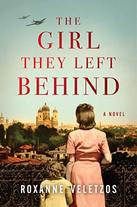 The Girl They Left Behind Roxanne Veletzos, Atria Books, 2018, 355 pp, $26.99, 9781501187681 Bucharest, Romania, 1941 King Carol II has abdicated, and General Antonescu’s Legionnaires are massacring Jews or disappearing them in the night. So when the knock comes on Iosef’s door and an officer tells him to come in for questioning—and to bring his wife and daughter—Iosef knows they’ll never return. Into the night they run, knowing they’re doomed: if they don’t freeze to death, the Iron Guard will find and kill them. Their only hope is to flee to the home of a friend who will hide them; but Stefan could never take them in with a child, Iosef tells Zora. If they are to save their daughter, they must abandon her to the mercy of strangers. And so, Roxanne Veletzos’s debut novel opens with a three-year-old sitting alone on the steps of an unfamiliar apartment building on a frigid January night, wondering when her parents are coming back for her. They aren’t. But she finds mercy in the concierge who rescues her, and in Stefan’s wife, Maria, who arranges for her own cousin to adopt her. Excellent crafting complements superb storytelling as Veletzos depicts the war’s atrocities and years of degradation and blight through the eyes of a child who knows nothing else. Veletzos relates Romania’s complex role in WWII succinctly and with such good timing that readers can understand what is happening in the war while remaining immersed in the lives of the many people who risk what they most cherish in order to give a child a shot at life. Based on the life of Veletzos’s mother, The Girl They Left Behind is a gripping story of endurance; of a childhood lived under a state of relentless war; and of goodness, courage, sheer will, and the fierce, selfless love that binds parent to child. Highly recommended. Rebecca Kightlinger Originally published in Historical Novels Review Issue 86, November 2018. Citation: Kightlinger, Rebecca. "The Girl They Left Behind" Historical Novels Review 86 (Nov. 2018). https://historicalnovelsociety.org/reviews/the-girl-they-left-behind/ All rights reserved. 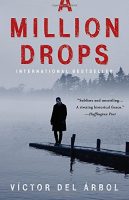 A Million Drops Víctor del Árbol, Other Press, 2018, pb, 640 pp, $19.95, 9781590518458. Translated from the Spanish by Lisa Dillman “Nobody wants to be sent off to freeze to death in Siberia. So the police make up any damn excuse to send them there, no trial, nothing. All it takes is no internal passport.” So begins Elías Gil’s nightmare. Having traveled to the USSR in 1933 to study and work, the idealistic young Communist engineer from Barcelona leaves his friends in a bar to go outside for a moment—without his passport—and is taken by police, shot, beaten, and jailed as a spy. Deprived of water for days, he tries to make sense of this “misunderstanding,” as his friends are arrested, mutilated, and forced to give him up. Faced with their betrayal and dying of thirst, Elías is offered water in exchange for his confession. “In the end, Elías picked up the glass, brought it to his lips, and with one sip sealed his fate.” In A Million Drops, award-winning author Víctor del Árbol creates a world as mystifying as that of Josef K.’s in Kafka’s The Trial. But del Árbol takes readers further—across generations, continents, and wars—in a tale whose characters are bound by secrets, love, revenge, and hatred. And not the kind of hatred we usually see. This hatred simmers and festers for generations, consuming all in its path and curling the reader’s lip. Readers who study the Spanish Civil War and the aftermath of the Russian Revolution will be gratified by del Árbol’s attention to detail. Those less familiar with the era will not get lost thanks to the author’s clear depiction of place, era, and politics. Blending personal, psychological, and historical elements in a nonlinear narrative, A Million Drops is complex, but del Árbol has the chops to pull it off. Take your time reading this one. It is worth every minute. Strongly recommended. Rebecca Kightlinger Originally published in Historical Novels Review Issue 84, May 2018. Citation: Kightlinger, Rebecca. "The A Million Drops" Historical Novels Review 84 (May 2018). https://historicalnovelsociety.org/reviews/a-million-drops/ All rights reserved.  The Taster V.S. Alexander, Kensington Books, 2018, $15.95, pb, 315 pp 9781496712271 Germany, 1943. When fiery destruction is predicted for Berlin, 25-year-old Magda Ritter is sent to live with relatives in Berchtesgaden. Unable to find work, she is chided by her aunt. “Every citizen must be productive. You should be ashamed and so should your parents for raising such a worthless girl.” She warily accepts her only job offer: an undisclosed position with the Party. I wasn’t a fortune-teller, but I wondered how dire my circumstances might become as a worker in the Reich. Her intuition serves her well, for her job is to taste food at The Berghof, Hitler’s sumptuous “mountain court,” where the cook explains, “Your body is offered in sacrifice to the Reich in case the food is poisoned.” When Hitler’s trusted officer, Captain Karl Weber, befriends Magda, she knows she must rely on that intuition, because everything she sees and hears now begins to carry treacherous double meanings as Weber’s attentions threaten to lead her into love—and into the Resistance. Alexander’s well-researched fictional account of Hitler’s final days is made intimate by his brilliant choice of a food taster as the first-person narrator. Necessarily a trusted employee, Magda is able to toss off insightful descriptions of Eva Braun and the Führer and provide glimpses of the inner workings of the Party from the point of view of a servant who must risk her own life to protect that of a man she detests. A lesser storyteller might have allowed such a conflicted narrator to weep and wail, but Alexander’s Magda looks into the maw of the Reich and reports atrocities without flinching, depicting her own suffering and heroism without hyperbole. Magda allows the reader to examine her own heinous acts, asking only that “you will not judge me as harshly as I have judged myself.” Highly recommended. Originally published in Historical Novels Review Issue 83, February 2018. Citation: Kightlinger, Rebecca. "The Taster" Historical Novels Review 83 (Feb 2018) 39. https://historicalnovelsociety.org/reviews/the-taster/ All rights reserved. 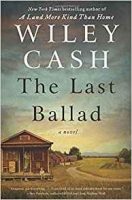 The Last Ballad Wiley Cash, Harper Collins, 2017, $26.99, pb, 372 pp, 97800623119 North Carolina, 1929 Twenty-eight-year-old Ella May has come down from the hills of Tennessee to the textile mills of North Carolina in search of a better life, but she finds only crushing poverty. Despite working full time, she cannot afford to feed and clothe her children. Learning of a union rally, she boards a truck “piloted by the young girl with the strange accent” and joins the strikers. Her voice and the ballads she has composed about her life make her a valuable asset to the union, and she is quickly recruited, earning a salary that allows her to risk her nine-dollar-a-week job and join the strikers. But this is not only Ella’s fight, nor is this only her story. Author Wiley Cash reveals up front that Ella was murdered in that strike and later hailed as a heroine. “No one knows who did it or why,” relates Ella’s now elderly daughter, “although I have long suspected that at that time everyone knew who did it and there were many reasons why.” Knowing the ending from the very start deprived me of the pleasure of wondering how Ella could possibly succeed and worrying about her as she faces down strikebreakers who decry her as a “commie bitch” and attack her from day one. But The Last Ballad is not a portrait of Ella; it’s a mural of late-1920s America depicting the clash of workers, mill owners, and strike breakers, each chapter entering the life of a character through detailed backstory and advancing the plot slowly and deliberately. Readers expecting a fast-moving, edge-of-the-seat story may be disappointed, but those who enjoy well-crafted life stories of many characters and seeing how those lives come together in a desperate cause will appreciate The Last Ballad. For them this book is recommended reading. Rebecca Kightlinger Originally published in Historical Novels Review, Issue 82, November, 2017. Citation: Kightlinger, Rebecca. "The Last Ballad" Historical Novels Review 82 (nov 2017). https://historicalnovelsociety.org/reviews/the-last-ballad/ All rights reserved. 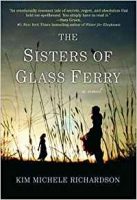 The Sisters of Glass Ferry Kim Michele Richardson, 2017, Kensington Publishing Company, pb, 255 pp, 15.00, 9781496709554 Lost things spilled onto the Kentucky’s banks, into fishermen’s hands, more than a few, revealing age-old secrets. Glass Ferry, Kentucky June, 1972 Patsy Butler’s been gone for twenty years. Some maintain she ran away with Danny Henry; most presume she’s dead. Yet Jean Butler has just baked another birthday cake for the daughter she’s sure is coming home today. Patsy’s twin sister, Flannery, is just as sure that today will be a bitter disappointment for her mother. But as she prepares for another birthday-party-that-will-not-be, Flannery flips on the radio and hears that a mud-caked Mercury has just been pulled out of the Kentucky River, “…shedding light on the decades old disappearance…” of the sister Flannery last saw with Danny and Hollis Henry in Hollis’s Mercury, on Ebenezer Road, prom night, 1952. Flannery harbors two secrets from that night: her own petty theft and the pact she made with Hollis. So, if that car is the one Patsy and Danny disappeared in, Flannery and Hollis will have a decision to make. In The Sisters of Glass Ferry, Kim Michele Richardson once again evokes secretive, small-town Southern life, this time in the bourbon-distilling, riverside town of Glass Ferry. Told from Flannery and Patsy’s points of view, the nonlinear narrative weaves intriguing characters through the girls’ story: whiskey distiller Beauregard “Honey Bee” Burton; long-dead midwife Joetta Ebenezer, alleged to have been a witch and a murderess, whose spirit still haunts Ebenezer Road; and Hollis Henry, whose character arc takes him from abusive roughneck to town sheriff and family-man-with-a-secret. Like Gunnar Royal, the God-fearing onetime executioner in Richardson’s award-winning Godpretty in the Tobacco Field, it is the complex, enigmatic Hollis, a finely nuanced villain at the heart of the story, who continues to haunt long after Richardson’s skillfully crafted tale ends. Highly recommended. Rebecca Kightlinger Originally published in Historical Novels Review, Issue 82, Nov, 2017. Citation: Kightlinger, Rebecca. "The Sisters of Glass Ferry," Historical Novels Review 82 (Nov 2017). https://historicalnovelsociety.org/reviews/the-sisters-of-glass-ferry/ All rights reserved. 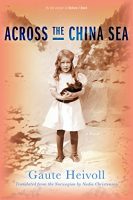 Across the China Sea Gaute Heivoll, Greywolf Press, 2017, $16.00, pb, 232 pp, 9781555977849 (Trans. Nadia Christensen) “This is what the new world was like: Our own asylum, in the midst of a forest, in the midst of the parish, forty kilometers from the coast.” Norway, 1945 “Is this the end of the world?” Stepping off the bus and standing at the edge of the road in the rural parish where she is about to begin a new life with her husband, her son (the story’s narrator), and the daughter she is carrying, Karin is dismayed by the silence. Karin and her husband, nurses specially trained in caring for the “mentally disabled,” have built a many-roomed house in the south of Norway, where they will raise their family while caring for clients. The first three are adult men who have suffered physical or emotional trauma that has rendered them incapable of living on their own. Soon, the family is joined by five young siblings whose ability to function has been impaired through poverty, malnutrition, and social deprivation. As a boy, the narrator initially sees the men as “crazy,” but as he comes to know them, he accepts them as individuals, just as he does the siblings: Ingrid, who howls; Nils, Erling, and Sverre, boys who speak but do not fully engage; and Lilly, who cares for her siblings as if she were their mother. Told without sentiment, this compelling tale is neither a tell-all nor a potboiler. It is the intimate account of a family’s life told with dignity, the chapters often ending on a note that invites the reader to linger for a moment rather than plunge ahead. The story may pick up in another time or place, but the skillfully crafted nonlinear narrative never confuses; and the thoughtful delivery of each character’s journey always calls the reader back. Recommended. Rebecca Kightlinger Originally published in Historical Novels Review, Issue 81, Aug, 2017. Citation: Kightlinger, Rebecca. "Across the China Sea," Historical Novels Review 81 (Aug 2017), 40. https://historicalnovelsociety.org/reviews/across-the-china-sea/ All rights reserved.  A Fortune Foretold Agneta Pleijel, Translat Marlaine Delargy, Other Press, 2017, New York, $14.95, pb, 256pp, 9781590518304 (Originally published in Swedish as Spadomen by Norsted’s, Stockholm, 2015) She has averted a dreadful threat. During Ricki’s visit she has laid herself like a bridge across the river of differences. She has succeeded. There must be no differences. And everyone must love one another. If they don’t, she will be split right down the middle. Mid-twentieth century Sweden By the time Neta is in sixth grade, she has been “the new girl” so many times, “… she feels the familiar chafing of being an outsider, the gnawed sensation that comes from being painfully compelled to see herself through the eyes of others. That is the worst thing of all. You are out of yourself, fumbling blindly.” An outsider at school, Neta becomes increasingly embroiled in her parents’ failing marriage. “Dad tells stories, does the dishes, and tries to cheer everyone up, but it doesn’t help. When he notices that none of this makes Mom feel any better, he becomes distant, as if a veil is drawn over his face.” As her father retreats, Neta becomes the bulwark between her depressed mother and her mother’s disappointing, unfulfilled life. It is therefore Ricki—Neta’s calm, stable aunt, an architect “surrounded by a magic all her own,”—whom Neta most wishes to emulate. “I am trying to remember Ricki, but I am the one who takes center stage. Or rather she does—the girl.” The narrator relates her coming-of-age in third-person, present-tense, non-linear scenes, referring to her younger self as “the girl” or “she” and peppering her story with first-person, past-tense reminiscence and commentary. This saltatory, dissociated narrative style occasionally proves unwieldy when time and place become unclear or when the identity of “she” comes into question, but it adroitly complements the narrator’s striving to reassemble and reconcile a distant, chaotic, peripatetic life. Highly recommended. Rebecca Kightlinger Originally published in Historical Novels Review, Issue 80, May, 2017. Citation: Kightlinger, Rebecca. "A Fortune Foretold" Historical Novels Review 80 (May 2017), 46. https://historicalnovelsociety.org/reviews/a-fortune-foretold/ All rights reserved. 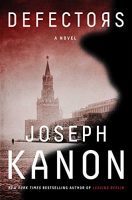 Defectors Joseph Kanon, Atria Books, 2017, $27.00, pb, 278pp, 9781501121395 Moscow, 1961 It’s been twelve years since CIA agent Frank Weeks betrayed his country—and his own brother—then disappeared behind the Iron Curtain. Now a KGB officer, Frank lives in Moscow under the eye of his “protector,” KGB Colonel Boris Vassilchikov. Having completed a tell-all memoir, Frank summons his brother, Simon, now a publisher, to take it to press. But when Simon arrives, Frank employs his old boyish charm and candor to overcome Simon’s misgivings and inveigle him—once again—into playing a pivotal role in a scheme that could go very wrong. Knowing his brother for a cool, accomplished liar, Simon keeps his eyes open as he makes his first irrevocable move in what feels like a high-stakes chess match. But the truly baffling nature of the game and its many players—Frank, Simon, the press, the KGB, the CIA, and a community of CIA defectors—becomes apparent to Simon only when Boris reveals the identity of the man he’s really been sent to watch. He had raised his eyes so that for a second they seemed to be looking over a handful of cards, and Simon saw that it wasn’t chess they were playing, but some elaborate game of poker, all of them playing, all of them cheating.” More than a spy thriller, Defectors is also a study in fidelity, a portrait of a man weighing his loyalty to his older brother against the certainty that his brother wouldn’t hesitate to betray him again. The narrator’s fast-moving, muscular prose contrasts with the bitten-off cadences of the CIA defectors, a speech pattern reflecting the captives’ constant vigilance in the presence of ubiquitous KGB microphones. Complex plot twists skillfully laid out keep the reader riveted: always wondering what’s ahead but never confused. Joseph Kanon’s Defectors is recommended reading. Rebecca Kightlinger Originally published in Historical Novels Review, Issue 80, May, 2017, p. 42. Citation: Rebecca Kightlinger, "Defectors," Historical Novels Review 80 (May 2017): 42. https://historicalnovelsociety.org/reviews/defectors/ All rights reserved. 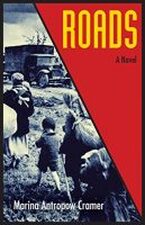 Roads Marina Antropow Cramer, Chicago Review Press, 2017, Chicago, US$15.99, pb, 352 pp, 9781613735565 “Under the surface, they felt the whirling currents pull at their bodies, twisting their clothing as if demanding ransom for the passage. I am stronger than you, the river proclaimed. Just let go.” Yalta, Russia, 1925 “There is going to be a child.” Having survived the Russian Revolution, music lover Zoya and her husband, postal worker Vadim, now have a son. They raise Filip in Yalta, “Russia’s Riviera,” providing him with an education that nourishes an artist’s soul: literature, opera, and the study of the distant lands whose stamps he collects. Filip’s classmate and friend Galina, daughter of craftsman Ilya and his wife, Ksenia, doesn’t share Filip’s love of learning; but, practical and loyal—and knowing him to be something of a weakling—she proposes marriage on Fillip’s 18th birthday, when he faces a choice from which married men are exempt: join Russia’s Red Army or be shipped to Nazi Germany’s mines and work camps. They marry, but Germany’s fortunes soon slip, and the occupying Nazis begin to recruit married men, offering “better conditions” to volunteers and their families than they will to men they must conscript. When Filip volunteers, he, Galina, Ilya, and Ksenia embark on a chaotic odyssey: a years-long struggle through deprivation, brutality, and disease. Near the end of the war, after surviving the bombs and fires of Dresden, the men and women are separated, and the four—plus, eventually, Galina’s newborn baby—must make their perilous way back together, to a new life. Close third-person narration and a clear, chronological timeline transport the reader into story. Style derives not from emotionally-charged prose but from elegant syntax and precise word choice. Historical and psychological research clearly inform this tale, but author Marina Antropow Cramer remains in the shadows, never revealing her hand. Highly recommended. Rebecca Kightlinger Originally published in Historical Novels Review, Issue 80, May, 2017. Citation: Kightlinger, Rebecca. "Roads". Historical Novels Review 80 (May 2017), 38. https://historicalnovelsociety.org/reviews/roads/ All rights reserved. 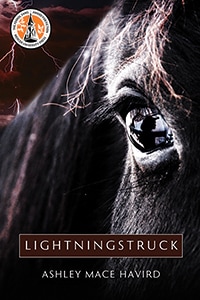 Lightningstruck Ashley Mace Havird, Mercer University Press, 2016, 16.00, pb, 249 pp, 9780881465969 It seemed as if the things I’d witnessed—Brad and Brenda, those bullies, trying to pick a fight at the drugstore sit-in, the fear seizing the grownups’ faces, Lamar Scurlock’s scrawny hand slapping Aubrey—all that ugliness was seared into the horse. In the spring of 1964, Etta McDaniel’s horse is struck by lightning on the family’s South Carolina tobacco farm. Knocked unconscious, Troy miraculously survives, his left eye blind and his left side seared, a living testament to life after death, a “hant horse” reminiscent of the spirits that haunt Cleo, the family’s African American housemaid and Etta’s constant companion. A bright girl who aspires to become an archaeologist, eleven-year-old Etta has long searched for buried treasure and artifacts. But the lightning strike that turned Troy’s eye inward seems to catalyze Etta’s coming-of-age as she too begins to see things differently: she comes to realize, for instance, that the young people who work on her family’s farm are forbidden to order a Coke at the drugstore counter; she learns that her family had long ago committed deeds she now sees as abhorrent; and as her awareness of the civil rights movement grows, her friendship with an activist—the widow of a Mohawk chief, an old woman deemed “a strange bird”—brings her face to face with the Ku Klux Klan. Some of our greatest novelists are poets, writers with the eye and the ear—and the chops—to summon the precise image to convey place, era, character, and import; to meld that image with sensation and emotion; and to translate this amalgam into metaphor that sears the reader with story. I did not have to read Ashley Mace Havird’s bio to know that she was one such writer. Her award-winning debut novel, Lightningstruck, is highly recommended. Rebecca Kightlinger Originally published in Historical Novels Review, Issue 79, February, 2017. Citation: Kightlinger, Rebecca. "Lightningstruck" Historical Novels Review 79 (February 2017) P.41 https://historicalnovelsociety.org/reviews/lightningstruck/ All rights reserved.  The Lost Girls Heather Young, 2016, Harper Collins, pb, 339 pp, $26.95, 9780062456601 As I said, I am the last. Since Lilith’s passing three years ago, the story of that summer has been mine alone to keep or to share. Lucy Evans, dying alone in an isolated lake house, has shouldered a burden for sixty-four years: a secret she now wishes to divulge to her great-niece, Justine, her sole beneficiary, in a letter to be read after her death. But when Justine takes possession of her great-aunt’s house, she is fleeing a suffocating relationship and trying to settle her daughters in a new school while coping with the return of her vagabond mother. So it is not until later, after Justine’s daughter has fallen under the spell of the lake house—and of six-year-old Emily, who long ago went missing—that Justine discovers Lucy’s letter. In it, Lucy resurrects the summer of 1935, a season of shifting allegiances for the Evans family. As eleven-year-old Lucy unpacks her trunks, she imagines the camaraderie she’ll share with her older sister. But thirteen-year-old Lilith, growing up and suddenly coquettish, shuns Lucy in favor of friends her own age. With Lilith spending more time away from the family, Lucy garners the attention her brooding father had reserved for his eldest. And as Lucy becomes her father’s favorite, her mother tightens her already constant vigilance over six-year-old Emily. But even Mrs. Evans has to blink. Lucy speaks her truths with candor, rolling out the secrets and unspeakable pacts that would anchor the Evans family to the lake house and taint four generations of Evans women. Into Lucy’s intimate recitation author Heather Young weaves the story of Justine’s nomadic life, incrementally turning up the tension that transforms a beautifully crafted work of historical fiction into a brilliant psychological thriller that rivals Shirley Jackson’s finest work. Highly recommended. Rebecca Kightlinger Originally published in Historical Novels Review, Issue 78, November, 2016. Citation: Kightlinger, Rebecca. "The Lost Girls" Historical Novels Review (Nov 2016). https://historicalnovelsociety.org/reviews/the-lost-girls/ All rights reserved. A Deadly Affection: Book One in the Dr. Genevieve Summerford Mystery Series by Cuyler Overholt11/6/2016 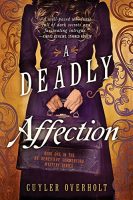 A Deadly Affection: Book One in the Dr. Genevieve Summerford Mystery Series Cuyler Overholt, Sourcebooks, 2016, $15.99, pb, 448pp, 9781492637363 New York City, 1907 Genevieve Summerford, MD, having spurned a position at a prestigious New York City hospital, is about to embark on a research study in the Yorkville tenement district. Her hypothesis: if women with psychosomatic pain can identify the trauma at its root, they can free themselves from it. In her first session, Summerford’s patient Eliza Miner discloses that she was once forced to give up her illegitimate baby. Still grieving eighteen years later, Eliza wants only to know the girl’s whereabouts. Summerford encourages Eliza to face Dr. Hauptfurer, the prominent physician who arranged the adoption, and demand the information. The next morning, Summerford sees Eliza Miner, dazed and covered in blood, being escorted by police from Hauptfurer’s office. While Detective Sergeant Maloney works to establish that it was Eliza who slit the doctor’s throat, Summerford investigates Hauptfurer’s many shady adoptions, homing in on one of the city’s wealthiest families, whose daughter, Summerford learns, was adopted only days after Eliza’s baby was born. Genevieve Summerford, young and inexperienced, with a tendency to act without thinking, has her own ghosts to exorcise, as do most of the characters in a cast that spans the spectrum of New York society. Author Cuyler Overholt peels back the skin of this hierarchy, deftly revealing the kind of secrets that pervade every societal level and that link the unlikeliest members of each. Rather than exploit New York’s vast cityscape to evoke atmosphere, Overholt goes intimate in this medical thriller, bringing Summerford and her suspects together in tight spaces—a drawing room, a railroad car, a back bedroom—where conversation becomes conflict and tension boils over into turmoil. A well-researched, entertaining mystery with conclusions you’ll never see coming, A Deadly Affection is an exciting start to what promises to be an addictive mystery series. Rebecca Kightlinger Originally published in Historical Novels Review, Online Issue 78, November, 2016. Citation: Kightlinger, Rebecca. "A Deadly Affection: Book One in the Dr. Genevieve Summerford Mystery Series". Historical Novels Review (Nov 2016). https://historicalnovelsociety.org/reviews/a-deadly-affection-2/ All Rights Reserved. 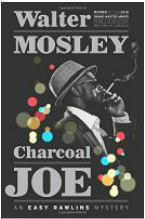 Charcoal Joe: An Easy Rawlins Mystery Walter Mosley, 2016, Doubleday, pb, 305 pp, 26.95, 9780385539203 Los Angeles, 1968 Private Investigator Ezekiel “Easy” Rawlins, having just opened his own detective agency, is feeling pretty good about life. And then Raymond “Mouse” Alexander, “gunman, strongarm, and wildcard,” shows up and calls in a marker. It seems prison inmate Rufus “Charcoal Joe” Tyler wants to hire Rawlins to investigate the double homicide for which his friend’s son, physicist Seymour Brathwaite, PhD, been charged. Rawlins, who owes Mouse his life—and then some—agrees, enlisting Fearless Jones, “one of the three people that Mouse claimed he wouldn’t want to tangle with,” to keep the artless PhD under wraps while he investigates. One victim, Rawlins learns, was shot dead and the other tortured and then shot in the eye and the heart. Both were found lying in a pool of blood at Brathwaite’s feet. The police found no weapon at the scene, and Brathwaite claims he was there looking for the housekeeper, his foster mother, Mama Jasmin. Buying Brathwaite’s story—for now—Rawlins prowls the underworld searching for a link between a housekeeper, a physicist, and a slaughter. He turns up a gambler, a jewelry clerk, and a big chunk of change that went missing the night of the murders and that just might get him killed. Mosley, building story character by character, can ratchet up the tension with just a look. “Tony Gambol was the type of man that you don’t want to squint at you.” Or with a brushstroke. “Elias Shaw—three hundred and then some pounds of muscle, hard fat, and bad intentions.” Or with a word of counsel. “Walk softly wherever it is you goin’. You know Charcoal Joe’s a tombstone just waitin’ for a name.” Mosley’s unforgettable characters and superior literary craft bring poetry to noir in Charcoal Joe. Highly recommended. Rebecca Kightlinger Originally published in Historical Novels Review, Online Issue 78, November, 2016. Citation: Kightlinger, Rebecca. "Charcoal Joe: An Easy Rawlins Mystery. Historical Novels Review (Nov 2016). https://historicalnovelsociety.org/reviews/charcoal-joe-an-easy-rawlins-mystery/ All rights reserved. 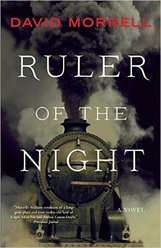 As a reader, I'm Ruler of the Night David Morrell, Mulholland Books, 2016, 27.00, hb, 342 pp, 978031630790 Release Date: November 15, 2016 London, 1855 Elderly writer Thomas De Quincy, alarmed at the banging and thumping coming from the train compartment next to his, suddenly feels rain strike him through the train’s open window. He wipes his face and looks down at his hand. It’s covered in blood. As a reader, I'm already on edge, fearful for the claustrophobic solicitor who has just met the enemy in the locked compartment adjacent to De Quincy’s; but now I now tumble headlong into 1850s London. I’ve been there before. Alongside police detectives Sean Ryan and Joseph Becker, opium addict Thomas De Quincy, and De Quincy’s stalwart daughter, Emily, I’ve scoured the streets of Victorian London ferreting out criminals in Murder as a Fine Art and Inspector of the Dead. Marveling at Morrell’s ability to submerge his readers in story, and thinking it was largely a matter of his meticulous depiction of setting, I read Ruler of the Night, the final book in the De Quincy murder trilogy, with an eye to discovering how Morrell creates such evocative atmosphere. Before long, I realized it was more than setting and atmosphere that had drawn me in. Beyond the novel’s elaborate historical detail and multi-sensory description, something else was at play. That something is narration. Specifically, it is the narrator’s homing in on secondary characters that delivers the goods. Omniscient but for the thoughts of Queen Victoria, Prince Albert, and Emily De Quincy (who speaks for herself through intimate journal entries), Morrell’s erudite, empathic narrator focuses on and then looks beyond the De Quinceys and the London detectives to the physical ailments, intimate thoughts, and irrational fears of secondary characters another narrator might overlook: a train guard, a solicitor, a beggar turned rich man’s wife. Each is carefully drawn—there are no bit characters here—because not only do these characters advance the plot, they also bring readers to physically experience the storyworld. It is through the train guard’s suppressing the urge to cough, for example, that we choke on the train yard’s soot; through the doomed solicitor’s claustrophobia that we panic as the rasp of metal on metal whispers that someone’s just locked the compartment door; and through the rich woman’s inexorable childhood memory of rats scurrying across a tenement floor that we recoil at the scritch scratch the onetime beggar still hears in the night. Morrell’s narrator ensnares us in the storyworld at the story’s opening and then again and again throughout the novel. Grounding us temporally and spatially in each scene through vivid depiction of historical landmarks and character movement, Morrell then keeps us there by layering setting with action, emotion, and sensation, never allowing a movement, a thought, or a dialogue exchange to accomplish fewer than three objectives, one of which is always to grip the reader. More than just a good read, David Morrell’s Ruler of the Night is an experience not to be missed. Rebecca Kightlinger |
AuthorRebecca Kightlinger Categories
All
|




















 RSS Feed
RSS Feed